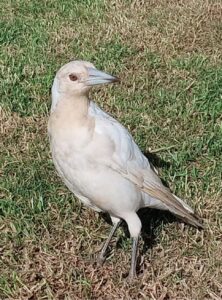New Mantis Shrimp
A giant predatory shrimp previously unknown to science has recently been found in the waters east of Sydney Harbour Bridge. The creature was discovered by marine biologist Shane Ahyong, as part of an ongoing study of crustacea in the Indo-Pacific area. The surprising thing is that such a large shrimp has gone unnoticed for so long, especially since there are plenty of them in the harbour. Shane says that the shrimp has previously turned up at the fish markets, but people didn’t realise it was a new species.
Mantis shrimps
Mantis shrimps resemble brightly coloured prawns, and they live in burrows in coral or sandflats. There are from 450 to 500 species in the world, including about 130 in Australia. They are very aggressive predators, darting from their burrows and crushing their victims with strong, praying mantis-like claws.
Erugosquilla grahami
The new mantis shrimp, which grows between 20cm and 40cm long, looks like a cross between a praying mantis and a lobster. As well as its distinctive colour – purple and blue with banded antennae – Erugosquilla grahami is also structurally different from other mantis shrimps. Claimed to be one of the fastest moving predators on earth, it can impale a victim with a claw in five to eight milliseconds. It’s known among fishermen as the “thumb splitter” – if grabbed at the wrong end it has a series of spines and barbs which are driven into the hand. Although this species is new to science, it is thought to have a 200 million year ancestry dating back as far as the Jurassic age.
Why does it matter?
This discovery makes us realise that we know far less about marine fauna than we should. However, it is encouraging to learn that even in polluted waters there’s still a huge diversity of life. Mantis shrimps have an eye structure which is more complex than that of any other invertibrate, so as a group they are of particular interest to scientists. Having specialised eyes means they must also have specialised brains and nervous systems to be able to deal with all that information, and so scientists plan to use the new shrimp for neurological research and for behavioural studies. Erugosquilla grahami is also good to eat, and may end up on our dinner tables sometime in the future.
Contact information
Shane Ahyong, Australian Museum, College Street, Sydney. Phone: (02) 9320 6138.



